第31章 MONEY OR SIMPLE CIRCULATION(12)
2.This does not,of course,prevent the market-price of commodities from rising above or falling below their value.But this consideration lies outside the sphere of simple circulation and belongs to quite a different sphere to be examined later,in which context we shall discuss the relation of value and market-price.
3.The following extract from M.Isaac Pereire's Lecons sur l'industrie et les finances,Paris,1832,shows that delicate spirits can be deeply hurt even by the quite superficial aspect of antagonism which is represented by purchase and sale.The fact that the same Isaac is the inventor and dictator of the Crédit mobilier and as such a notorious wolf of the Paris stock exchange points to the real significance of such sentimental criticism of economics.M.Pereire,at that time an apostle of St.Simon,says:"Since individuals are isolated and separated from one another,whether in their labour or their consumption,they exchange the products of their respective occupations.The necessity of exchanging things entails the necessity of determining their relative value.The ideas of value and exchange are therefore closely linked and in their present form both are expressions of individualism and antagonism....The value of products is determined only because there is sale and purchase,in other words,because there is antagonism between different members of society.Preoccupation with price and value exists only where there is sale and purchase,that is to say,where every individual is compelled to fight in order to obtain the things necessary for the maintenance of his existence"(op.cit.,pp.
2,3passim).
4."Money is only the medium and the agency,whereas commodities that benefit life are the aim and purpose."Boisguillebert,Le déteil de la France,1697,in Eugene Daires's Economistes financiers du XVIIIe siècle,Vol.I,Paris,1843,p.210.
5.A pamphlet by William Spence entitled Britain Independent of Commerce was published in London in November 1807,its thesis was further elaborated by William Cobbett in his Political Register under the more militant heading "Perish Commerce".Against this James Mill wrote his Defence of Commerce ,which appeared in 1808;in that work he already advances the argument which is also contained in the passage quoted above from his Elements of Political Economy.This ingenious invention has been appropriated by J.B.Say,and used in his polemic against Sismondi and Malthus on the question of commercial crises,and since it was not clear which new idea this comical prince de la science --whose merit consists rather in the impartiality with which he consistently misinterpreted his contemporaries Malthus,Sismondi and Ricardo --has contributed to political economy,continental admirers have proclaimed him as the discoverer of the invaluable proposition about a metaphysical equilibrium of purchases and sales.
6.The way in which economists describe the different aspects of the commodity may be seen from the following examples:
"With money in possession,we have but one exchange to make in order to secure the object of desire,while with other surplus products we have two,the first of which (securing the money)is infinitely more difficult than the second"(G.Opdyke,A Treatise on Political Economy ,New York,[1851),pp.287-88).
"The superior saleableness of money being the exact effect or natural consequence of the less saleableness of commodities"(Thomas Corbet,An Inquiry into the Causes and Modes of the Wealth of Individuals ,etc.,London,1841,p.117).
"Money has the ...quality of being always exchangeable for what it measures"(Bosanquet,Metallic,Paper,and Credit Currency ",London 1842,p.100).
"Money can always buy other commodities,whereas other commodities cannot always buy money"(Thomas Tooke,An Inquiry into the Currency Principle,Second Ed.,London,1844,p.10.)The Circulation of Money Karl Marx's A CONTRIBUTION TO THE CRITIQUE OF POLITICAL ECONOMYb.The Circulation of Money In the first instance real circulation consists of a mass of random purchases and sales taking place simultaneously.In both purchase and sale commodities and money confront each other in the same way;the seller represents the commodity,the buyer the money.As a means of circulation money therefore appears always as a means of purchase ,and this obscures the fact that it fulfils different functions in the antithetical phases of the metamorphosis of commodities.
Money passes into the hands of the seller in the same transaction which transfers the commodity into the hands of the buyer.Commodity and money thus move in opposite directions,and this change of places --in the course of which the commodity crosses over to one side and money to the other --occurs simultaneously at an indefinite number of points along the entire surface of bourgeois society.But the first move of the commodity in the sphere of circulation is also its last move.[1]No matter whether the commodity changes its position because gold is attracted by it (C --M)or because it is attracted by gold (M --C),in consequence of the single move,the single change of place,it falls out of the sphere of circulation into that of consumption.Circulation is a perpetual movement of commodities,though always of different commodities,and each commodity makes but one move.Each commodity begins the second phase of its circuit not as the same commodity,but as a different commodity,i.e.,gold.The movement of the metamorphosed commodity is thus the movement of gold.The same coin or the identical bit of gold which in the transaction C --M changed places with a commodity becomes in turn the starting point of M --C,and thus for the second time changes places with another commodity.